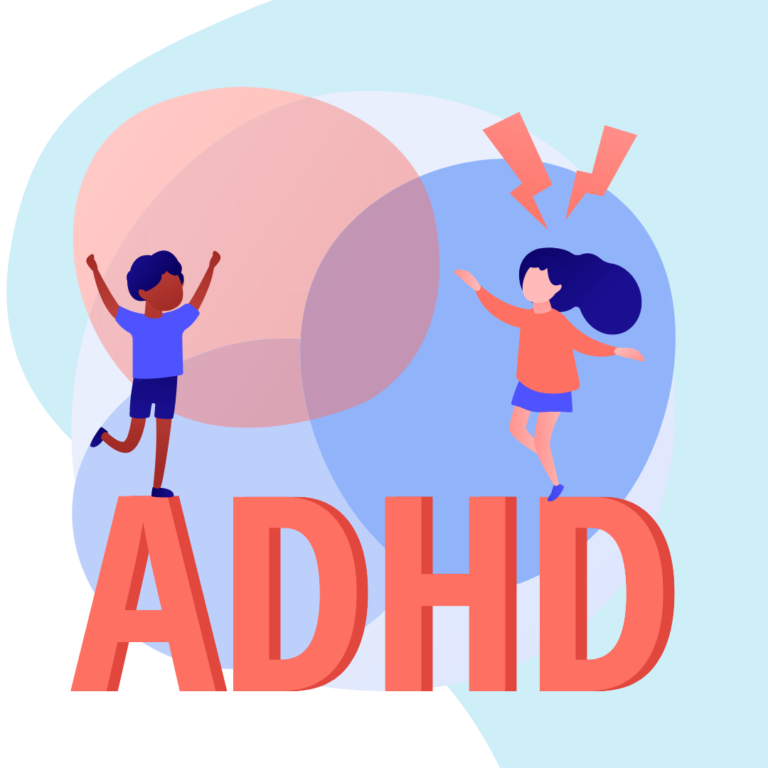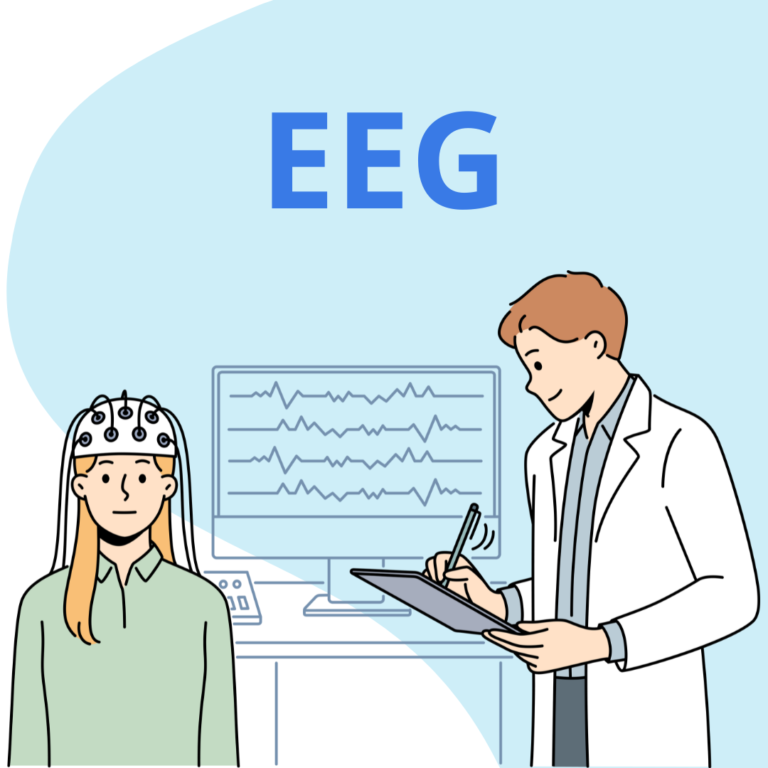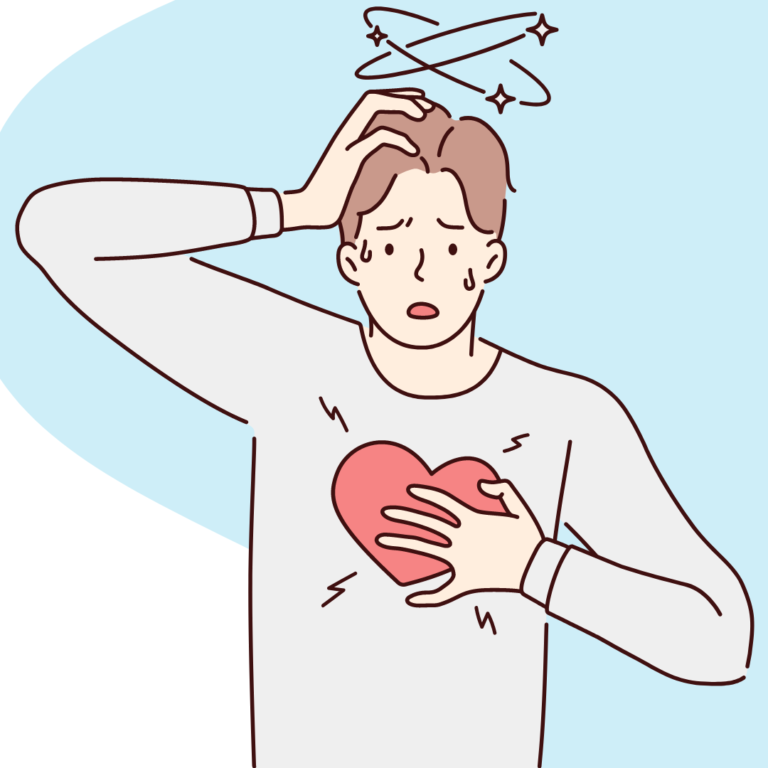Describing EEG studies and reading referrals from psychiatrists, I see that some of you may have uncertainties about the purpose of this examination. I have noticed that there are doctors who prescribe EEG for seemingly all their patients. I also know that there are those who do not prescribe it at all, assuming that it is a test only useful for neurologists. Let’s consider when EEG can be useful for a psychiatrist and when it does not make sense to prescribe it.
When EEG won’t help
Let’s start with situations where EEG will not contribute to the diagnosis or may even provide misleading information.
The most important indication (as often seen in referrals) is the search for organic changes. Many years ago, when X-rays were the only imaging test available (which, as we know, does not show brain structures), EEG was the only alternative. However, in the era of well-developed and easily accessible imaging tests such as CT scans or MRIs, prescribing EEG is a mistake. We now know that EEG can sometimes show changes in organic damage, but it is not guaranteed. Additionally, due to the projection of rhythm changes, what we see can be misleadingly localized. And, of course, it won’t reveal the nature of the damage.
Remember, EEG is a study of the brain’s electrical function, not its structure. Therefore, it is crucial not to replace imaging with EEG.
Another situation where EEG may not contribute much is in disorders within the realm of so-called minor psychiatry. In the diagnosis of both depressive and anxiety disorders (except for panic attacks, as discussed below), EEG has virtually nothing to offer. We are talking here about standard EEG with qualitative assessment. Quantitative analysis (QEEG) has been developing for some time and may be useful, but currently available studies still do not provide strong evidence. Therefore, in doubtful cases, this examination can be considered, but results should always be evaluated in the context of clinical data.
When EEG is useful for a psychiatrist
Alright, so when does it make sense to prescribe this examination? Primarily, in all situations where any form of seizures is suspected. Anything that happens suddenly and rapidly may suggest a seizure, and epilepsy (a disorder of brain electrical function) is a primary indication for EEG. Consider it in:
- Concentration and attention disorders (including ADHD)
- Anxiety attacks (some seizures, e.g., from the temporal lobe, may manifest as anxiety)
- Dementia, especially with sudden onset and rapid progression (differentiating from non-convulsive status epilepticus*)
- Disorders of consciousness and catatonia (excluding status epilepticus*)
*In situations where symptoms may be indicative of non-convulsive status epilepticus, EEG is the only test from which a diagnosis can be made. Early initiation of proper treatment in the hospital can be crucial for the patient’s life.
At the same time, it’s essential to remember that epilepsy cannot be diagnosed based solely on EEG. Completely healthy individuals may have significant seizure-like changes in their recordings. EEG, like any other additional examination, is just that – an additional examination. Clinical judgment always prevails.
It’s worthwhile to perform this examination regularly in diseases where epilepsy often coexists.
- Dementia
- Post-stroke or post-head injury states
- Autism spectrum disorders
- Genetically conditioned syndromes such as:
- Down syndrome
- Angelman syndrome
- Rett syndrome
- Developmental disorders in children – including Landau-Kleffner syndrome (acquired aphasia with accompanying emotional disturbances and characteristic seizure-like discharges during sleep)
Another indication is in various types of encephalopathies, where EEG can help determine the extent of brain involvement. Remember that changes in EEG may persist for some time after clinical improvement.
Finally, an indication in which EEG can be extremely useful in psychiatric practice is sleep disorders. The gold standard is, of course, polysomnography. However, there are not many polysomnographic laboratories in our country, and this examination can be challenging to access. Therefore, it is worth considering ordering EEG to assess sleep, but keep in mind that the examination must be done during sleep (preferably with simultaneous video recording, especially when diagnosing sleep movement disorders). In small children, the examination can be performed at their usual sleep time during the day. For adults, it is best to conduct the examination at night. If there is suspicion of a seizure origin, it is good to perform the examination in the morning after sleep deprivation. If we want to assess, for example, sleep architecture or latency, we need to conduct the examination during the patient’s normal nighttime rest. Of course, these should be longer studies, sometimes even overnight. It is crucial to carefully consider what we want to capture in the recording of bioelectrical activity and plan the examination accordingly.
In summary, EEG will be most useful for a psychiatrist in diagnosing sleep disorders and in all situations where epilepsy may be a differential or coexisting diagnosis. Of course, it is recommended to refer the patient to a neurologist specializing in epilepsy, but if the patient comes with the test result, it will expedite the diagnostic process.
To conclude, the most important takeaway from this text:
EEG is a study of the brain’s electrical function, not its structure. Therefore, organic damage cannot be diagnosed using EEG.
The text was written by Marta Banaszek, a neurologist from the Neurosphera clinic.




